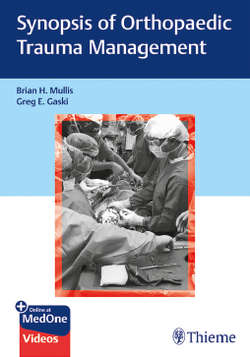Читать книгу Synopsis of Orthopaedic Trauma Management - Brian H. Mullis - Страница 57
На сайте Литреса книга снята с продажи.
III. Malunion
ОглавлениеMany of the principles discussed above in relation to nonunion also apply to malunion, particularly, the evaluation of when to intervene. For surgical correction to be considered, the malunion must be causing an unacceptable functional or cosmetic deformity.
A. Assessment
1. History:
a. How much does the malunion affect the current activities of daily living, employment, and desired activities of the patient.
b. What is the psychologic effect of the deformity on the patient is important to determine, yet treatment should be directed towards functional gain.
c. Were there any issues during the previous injury or surgery which may have interfered with healing or which may have contributed to forming a malunion?
2. Physical exam—the evaluation of adjacent structures and functional impacts of malunion is critical. When evaluating and deciding whether to address a malunion with operative intervention, there are several characteristics to consider which are as follows:
a. Limb length discrepancy (typically > 2 cm in lower extremity, 3 cm upper extremity).
b. Clinically relevant malrotation (typically > 15–20 degrees).
Fig. 7.3 (a) A 29-year-old male with a congenital 14-degree valgus deformity and 2 cm of shortening. (b) Osteotomy and application of circular ring fixator to gradually fix both length (via distraction osteogenesis) and alignment.
c. Angular alignment of the deformed limb (> ~10 degrees for lower extremity and higher for upper extremity).
d. Adjacent joint range of motion, particularly if there are contractures present.
3. Imaging:
a. For lower extremity deformity correction, full-length standing radiographs (anteroposterior and lateral) are extremely helpful in the evaluation and treatment planning stages.
b. Computed tomography is particularly helpful in assessing rotation/torsion. It may be necessary to have both the affected and contralateral extremity in the scanner to provide comparison to the normal side.
B. Treatment
1. Treatment protocols are site specific.
2. Based on the location and extent of the deformity, it must be decided to address the issue with an acute or gradual correction.
3. If considering a gradual correction, particularly with an external fixator, it is critical to assess the social environment of the patient to ensure that it will not place them at an unnecessarily high risk for infection or other complication.
4. Surgical correction typically requires an osteotomy through or near the area of maximum deformity.
a. This requires careful preoperative templating to assess the degree of correction required, and the location and position of the osteotomy.
b. Planning will also have to account for changes in limb length and will likely determine which implant options are available and/or desirable.
c. Typical options are plates and screws, IM nails, or external fixation.
d. Internal fixation is typically better tolerated by patients, but the deformity must be amenable to an acute correction.
e. For severe angular or rotational deformities or severe shortening, an external fixation-driven gradual correction is the best option (▶Fig. 7.3). However, there are new IM nails which can expand or contract by the daily application of external magnets and may provide an alternative to circular frames for lengthening procedures.
